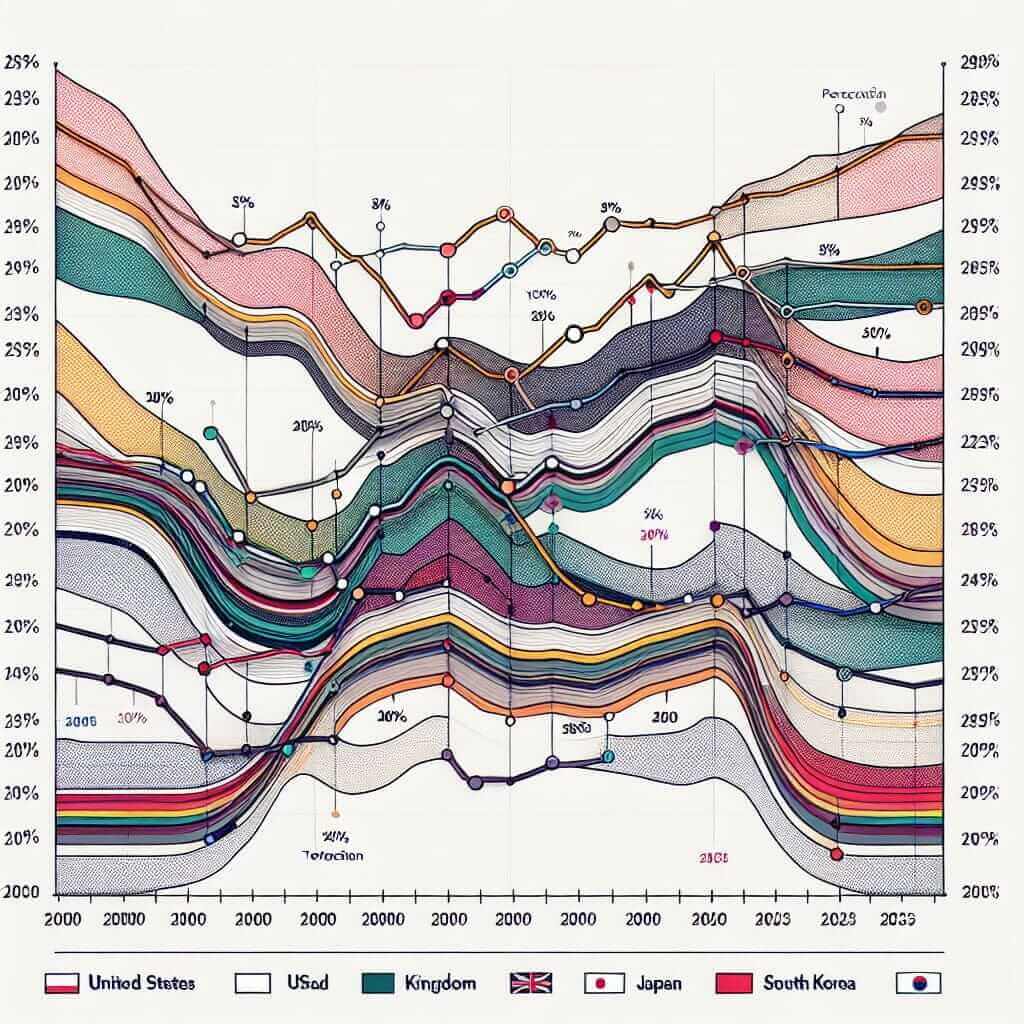“Educational attainment by country” is a recurring theme in IELTS Writing Task 1, reflecting its significance in our globalized world. Understanding this topic and mastering the skills to describe related data is crucial for achieving a Band 7+ score.
This comprehensive guide delves into analyzing “educational attainment by country” data, equipping you with the necessary tools and techniques to excel in your IELTS Writing Task 1. We’ll dissect real-world examples, analyze sample data, and provide valuable tips for crafting high-scoring responses.
Understanding “Educational Attainment by Country” in IELTS Writing Task 1
Potential IELTS Writing Task 1 Questions:
- The chart below shows the percentage of the population with a tertiary education in four different countries from 2000 to 2020. Summarize the information by selecting and reporting the main features and make comparisons where relevant.
- The table illustrates the average number of years of schooling completed by adults aged 25-34 in selected regions worldwide between 2000 and 2020. Write a report for a university lecturer describing the information shown below.
- The line graph compares the literacy rates of males and females in a particular country from 1900 to 2000. Summarize the information by selecting and reporting the main features and make comparisons where relevant.
Sample IELTS Writing Task 1 Question & Model Answer
Let’s analyze a sample question and craft a model answer:
The table below shows the percentage of the population aged 25-34 with a tertiary education in four different countries from 2000 to 2023. Summarize the information by selecting and reporting the main features and making comparisons where relevant.
| Country | 2000 | 2005 | 2010 | 2015 | 2020 | 2023 (estimated) |
|---|---|---|---|---|---|---|
| United States | 35% | 38% | 42% | 45% | 47% | 50% |
| United Kingdom | 28% | 32% | 37% | 41% | 43% | 46% |
| Japan | 25% | 28% | 32% | 35% | 38% | 40% |
| South Korea | 30% | 35% | 42% | 50% | 55% | 60% |

Model Answer:
The table illustrates the proportion of 25-34 year-olds possessing a tertiary education in four nations between 2000 and 2023. Overall, there has been a noticeable upward trend in educational attainment across all countries, albeit at varying rates.
South Korea exhibited the most dramatic surge, with the percentage of young adults holding a tertiary degree soaring from 30% to an estimated 60% over the period. Similarly, the United States witnessed a considerable increase from 35% to a projected 50%.
The United Kingdom and Japan also followed the global trend, although their growth was less pronounced. The UK’s figures rose steadily from 28% in 2000 to an anticipated 46% in 2023, while Japan lagged slightly behind, starting at 25% and reaching a projected 40% by the same year.
Interestingly, despite commencing at different levels, South Korea is predicted to overtake the United States in terms of tertiary education attainment by 2023. This data highlights the rapid educational development occurring in certain countries. (Word count: 155)
Key Takeaways and Tips:
- Paraphrase the question: Begin by paraphrasing the question to demonstrate your vocabulary and avoid plagiarism.
- Highlight the overall trend: Identify and state the main trend(s) presented in the data.
- Provide specific data: Support your claims with relevant and accurate data from the provided visual.
- Make comparisons: Compare and contrast different data points to showcase your analytical skills.
- Use appropriate vocabulary: Utilize a range of vocabulary related to trends, comparisons, and data interpretation.
- Proofread carefully: Allocate time to review your answer for grammatical errors and clarity.
Essential Vocabulary for Educational Attainment:
- Tertiary education: (noun) /ˈtɜːʃəri ɛdʒʊˈkeɪʃən/ – Education at a university or college level.
- Attainment: (noun) /əˈteɪnmənt/ – The action or fact of achieving something.
- Surge: (noun) /sɜːrdʒ/ – A sudden and great increase.
- Projected: (adjective) /prəˈdʒɛktɪd/ – Estimated or forecast on the basis of present trends.
- Lag behind: (verb phrase) /læɡ bɪˈhaɪnd/ – To make slower progress than others.
Conclusion:
Mastering the art of describing “educational attainment by country” data is essential for achieving a high score in IELTS Writing Task 1. By understanding the key trends, utilizing appropriate vocabulary, and employing effective writing techniques, you can confidently tackle this topic and boost your overall IELTS score. Remember to practice analyzing various charts and graphs related to educational attainment to refine your skills and enhance your confidence.